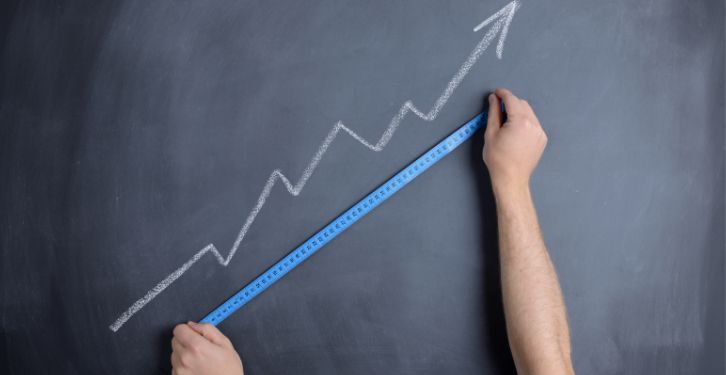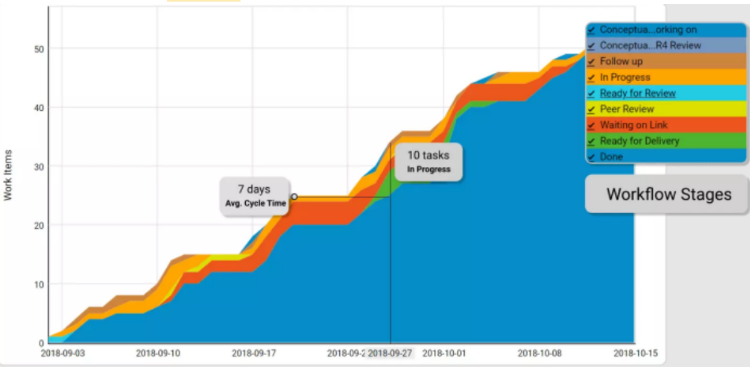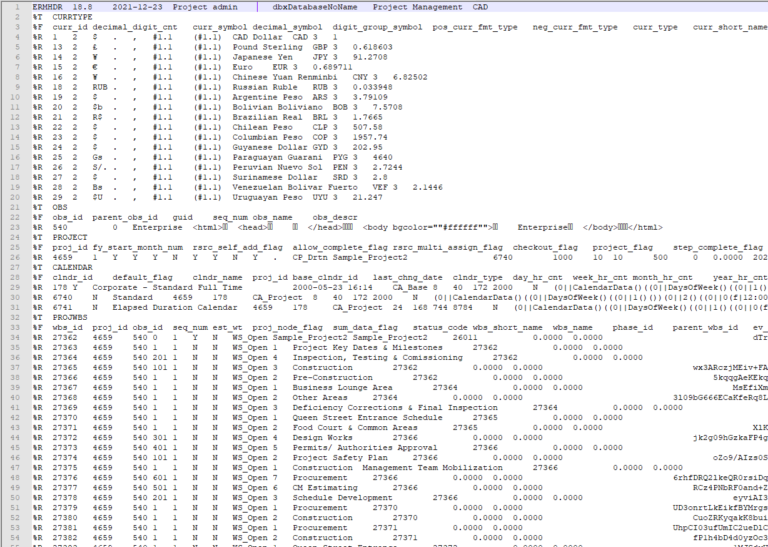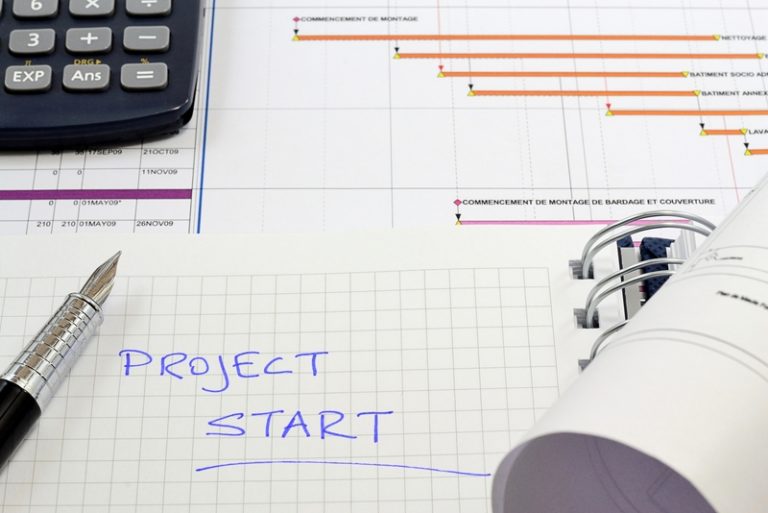12 Methods of Measuring Project Progress

Measuring project progress is important to ensure that project goals are met. Project managers need to be able to answer questions about the progress of your projects. As well as identify potential risks, and take corrective action if necessary. This task is more difficult when your project is spread out over multiple teams, each with its work methods. Although project progress can easily be measured through numerical data, such as percentages and statistics, it can be useful to have a few different methods for measuring project progress available at your disposal. Using some of these more qualitative methods will better evaluate how successful your team has been and whether or not any potential roadblocks might slow down progress. There are many ways in which the progress of a project can be measured; some of these are outlined below:
1. Units Completed
This is probably among the project management tips and the easiest approach to measuring progress, as it requires no additional equipment or software. The most obvious way of comparing the units completed on two different projects is to count how many are left before completion. However, you’ll need to keep track of both the number of units that have been completed and those that still need to be accomplished. (For example, if you’re trying to determine which project has more units completed, note whether 80% of the units have been accomplished on one project and then change your focus from 80% to 100%. This will give you a better comparison).
2. Incremental Milestones
This measuring project progress is similar to the unit completed approach but utilizes a series of smaller benchmarks to be checked off as progress is made. In this case, the milestones could be anything that signifies forward movement, such as “draft one,” “final draft,” or even something more specific, like “wrote the first chapter.” Incremental milestones can be helpful not only in determining the amount of progress that has been made toward a project’s completion and in identifying processes that might be taking longer than expected. All team members must keep track of all milestones; if you’re using a collaborative software platform for your project management instead of an Excel spreadsheet, you may more easily document incremental milestones.
3. Percent Completed
This is one of common project management methods that is effective as the incremental milestones approach is; it doesn’t provide an accurate way of measuring how far along two projects are at the same point in time. An easier alternative is to track the percent completion of a certain project milestone, such as the first draft. This method can be especially helpful when you want to compare different projects’ progress toward the same set of goals, such as “100% of stage 1.” Less-specific project goals can also be expressed as percentages; for example, “50% done” or “100%.” This is a good way to get an overall idea of a project’s progress without getting bogged down in specific details.
4. Concept of Velocity
Velocity is a term frequently used in software development, particularly Scrum. It refers to the rate of progress made toward completion. In this case, you would measure the number of units completed each week and plot that number on a graph to determine your velocity. This technique gives you a better idea about your project’s progress than simply looking at the units completed. You can compare your velocity to other similarly-sized projects or even use it as an evaluation criterion for future projects.
5. Start/Finish
Another important way of measuring project progress is by the percentage of the total project that has been completed. This is true regardless of whether you’re comparing two projects or looking at different goals for the same project. There are several methods to measure start and finish, but it’s best to keep them simple. Although trying to fit a percent onto a regular schedule can be time-consuming and difficult, several online tools or in your collaboration platform will help you create this format.
Construction of a simple start/finish chart is important, but it should be kept as simple as possible. You may also consider using a data visualization tool such as a bar graph or pie chart for presentation.
6. Cost Ratio
Although measuring project progress is more commonly used in financial situations, it can also be useful when determining how far along two projects are. By dividing the cost of one project by the cost of another and setting up a graph over time, you’ll be able to obtain a ratio for each point in time. This can be especially helpful for multi-project situations, where it is crucial to know which project is more costly and which project is more successful.
7. Cumulative Flow Diagram

A cumulative flow diagram (CFD) is a chart that displays an overview of all resources that have been used to complete your project and the relative proportion they represent compared to the total use of resources. Each line represents one resource, and the chart contains two lines for every resource: the horizontal axis represents time, and the vertical axis is usually a cumulative value. The chart is drawn as a series of colored lines stacked on top of each other, with green representing completed tasks, red representing incomplete tasks, and yellow represents open tasks.
A cumulative flow diagram is used to visualize progress through a complex network of multiple projects developed simultaneously. Each task or project can be identified by a different colour line or bubble, which indicates the status of that particular task: red means it hasn’t begun yet; yellow means it’s in progress, and green means it has been completed.
8. Experience/Opinion
When trying to measure progress and determine which project has more units completed, one of the simplest approaches is to rely on the experience and opinion of someone who has been following along with both projects. This can be as simple as asking a coworker or even a team member to help you decide which project seems to be going more smoothly and will likely result in better success.
Project management experts have different views on the best methodology for measuring project progress. Some, such as Stephen R. Covey, advocate for a similar approach, and others, such as Dianne Miller, recommend that you avoid comparing projects at all costs. No matter what approach you take, it’s important to use the same method for all projects to have the most effective and accurate comparisons.
9. Weighted or Equivalent Units
Another method of measurement that is gaining popularity, particularly in software development, is determining project progress by the number of equivalent units that have been completed. Although this is a widely used process for software development, it can also be utilized by almost any other type of project.
In the case of project workloads, the work might be divided into units such as bugs and feature requests. While all projects within that company might be using a different scale to measure workloads and assign points to each unit, every team member needs to use the same scale when comparing projects. This allows you to make effective comparisons between different teams and individual projects within your organization and between different types of projects.
10. Comparison with Other Projects, Teams, or Individuals Using Similar Methods
Depending on how you measure your progress and compare it to similar projects or teams, you may find yourself with some conflicting numbers. In these cases, it can be helpful to use your project dashboard to compare projects within the same time frame. Suppose you’re still having trouble deciding which project has more units completed or which methodology is most effective. In that case, you can also compare your work and progress against a similar team or project from another company. This comparison is best utilized when your company has multiple projects facing similar challenges but implemented different measurement and tracking methods.
11. Frequency of Tasks
Some projects are more time-sensitive than others, which makes the frequency of task completion a useful performance measure. This method can be used to determine how often tasks need to be completed, or it can also be used to evaluate whether or not a certain task is taking too much time. When using this method, it’s important to keep in mind that different team members have different work schedules. For example, a member of a development team might not be able to complete their daily tasks until 3 or 4 p.m., which may lead to delays in the progress of their project. When including this method in your performance evaluation plan, you should take this into account.
12. Department Goal Progress
If you’re using a collaborative software platform for your project management, you’ll probably have access to dashboards that display your project’s progress by department or individual team members. This can be another helpful method of determining progress and identifying potential roadblocks. This shows how project management can visually represent teams performance in a certain area. If you’re struggling with which project has more units completed, this dashboard may serve as the best way to compare team performance to gain insight into your work.
Although many different methods are available for tracking project progress, no one method is universally better than the others. The approach you use will depend on the specific needs of your project, the time and resources at your disposal, and your creativity in coming up with a unique approach. Although there are many different approaches to measuring project progress, it’s important that you pick a technique that works best for your team and your project.





